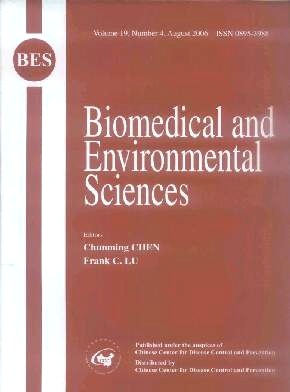Alterations of FHIT Gene and P16 Gene in Nickel Transformed Human Bronchial Epithelial Cells
-
Key words:
- Crystalline nickel sulfide /
- Human bronchial epithelial cell line /
- Malignant transformation /
- P16 gene /
- FHIT gene
Abstract: To study the alterations of FHIT gene and P16 gene in malignant transformed human bronchial epithelial cells induced by crystalline nickel sulfide using an immoral human bronchial epithelial cell line, and to explore the molecular mechanism of nickel carcinogenesis. Methods 16HBE cells were treated 6 times with different concentrations of NiS in vitro, and the degree of malignant transformation was determined by assaying the anchorage-independent growth and tumorigenicity. Malignant transformed cells and tumorigenic cells were examined for alterations of FHIT gene and P16 gene using RT-PCR, DNA sequencing, silver staining PCR-SSCP and Western blotting. Results NiS-treated cells exhibited overlapping growth. Compared with that of negative control cells, soft agar colony formation efficiency of NiS-treated cells showed significant increases (P<0.01) and dose-dependent effects. NiS-treated cells could form tumors in nude mice, and a squamous cell carcinoma was confirmed by histopathological examination. No mutation of exon 2 and exons 2-3, no abnormal expression in p16 gene and mutation of FHIT exons 5-8 and exons 1-4 or exons 5-9 were observed in transformed cells and tumorigenic cells. However, aberrant transcripts or loss of expression of the FHIT gene and Fhit protein was observed in transformed cells and tumorigenic cells. One of the aberrant transcripts in the FHIT gene was confirmed to have a deletion of exon 6, exon 7, exon 8, and an insertion of a 36 bp sequence replacing exon 6-8. Conclusions The FHIT gene rather than the P16 gene, plays a definite role in nickel carcinogenesis. Alterations of the FHIT gene induced by crystalline NiS may be a molecular event associated with carcinogen, chromosome fragile site instability and cell malignant transformation. FHIT may be an important target gene activated by nickel and other exotic carcinogens.
| Citation: | WEI-DONG JI, JIA-KUN CHEN, JIA-CHUN LU, ZHONG-LIANG WU, FEI YI, SU-MEI FENG. Alterations of FHIT Gene and P16 Gene in Nickel Transformed Human Bronchial Epithelial Cells[J]. Biomedical and Environmental Sciences, 2006, 19(4): 277-284. |







 Quick Links
Quick Links
 DownLoad:
DownLoad: